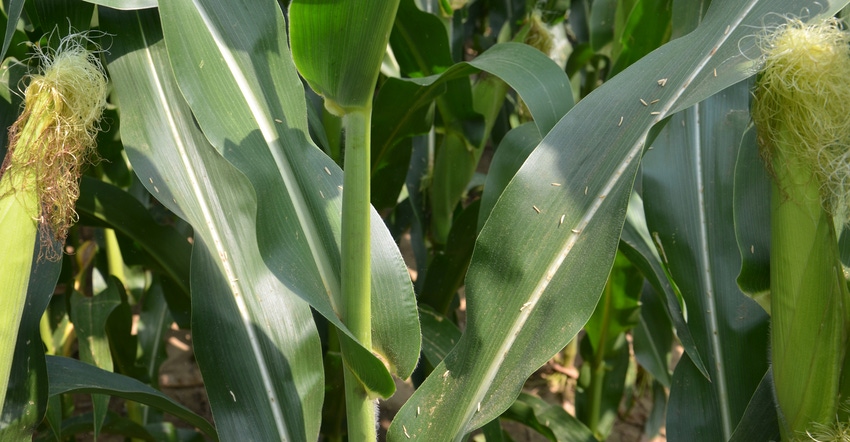July 9, 2020

Where I live, it’s iffy whether I will see rootworm problems in first-year corn. Can I learn anything by walking corn to see if beetles are present? Or should I check soybean fields instead? It’s tough scouting in big beans. What would you do?
The Indiana certified crop advisers panel answering this question includes Betsy Bower, agronomist, Ceres Solutions, Terre Haute; Jesse Grogan, regional manager, AgReliant Genetics LLC, Lafayette; and Stan Miles, agronomist, A&L Great Lakes Labs, Fort Wayne.
Bower: If you plan to use untraited corn for corn rootworms next year, it’s a good idea to scout for corn rootworm beetles even in areas where they are iffy in Indiana. There are a couple of ways to determine the potential for corn rootworm infestations in your rotated cornfield the following year.
You can scout the corn beside your soybean field for corn rootworm beetles. You should survey the field from now through early September. Purdue Extension Publication E-49-W, Managing Corn Rootworms, indicates you would need to find 0.5 beetle per plant at a 28,000 population or higher to produce an economic larval population threshold for first-year corn the following year.
The same publication details how to scout for corn rootworms in soybeans by employing sticky traps. Six traps need to be placed 100 paces apart in the field. To help the walkability between traps, use previous postemergence wheel tracks. You will need to consult Purdue Extension Publication E-218-W, Monitoring and Decision Rules for Western Corn Rootworm Beetles in Soybean, for thresholds. Traps need to be monitored weekly.
Grogan: One should not eliminate corn rootworm larval control in central and northern Indiana without scouting. Checking cornfields for adult corn rootworm works, especially for continuous corn anywhere in the state. Walk your cornfields as silking begins and beetles are active.
If beetles are not active, check every two to three days, twice a week, until silking is complete. Check once a week until September for egg-laying females. Sampling should be done in midmorning or late afternoon, when temperatures are more moderate.
Treatment thresholds for soil insecticide use or for rootworm-protected corn is determined and can be found in this Purdue University document.
Sampling a soybean field for first-year corn is advisable in central and northern Indiana, where first-year corn rootworm is established. Pherocon AM sticky traps for adult rootworms can also be used in cornfields from silking to dent stage. Instructions for using traps can be found in this Iowa State University Extension document. These recommendations are for Iowa, where corn rootworm resistance has developed. Instructions for adult sampling in soybeans for Indiana can be found in this Purdue Extension document.
Miles: Effective western corn rootworm control measures such as transgenic traited seed or insecticide treatments at planting must be planned prior to the cropping season. Scouting for beetles in the growing corn crop only indicates that the larval root-feeding damage may have already occurred, leaving no good control options for the current year.
Monitoring of adult beetle populations during the previous year’s soybean crop offers the best chance of making the right decision for the upcoming corn planting season. There are tools available, such as yellow sticky traps, that can be placed around soybean fields to improve beetle monitoring.
You May Also Like




